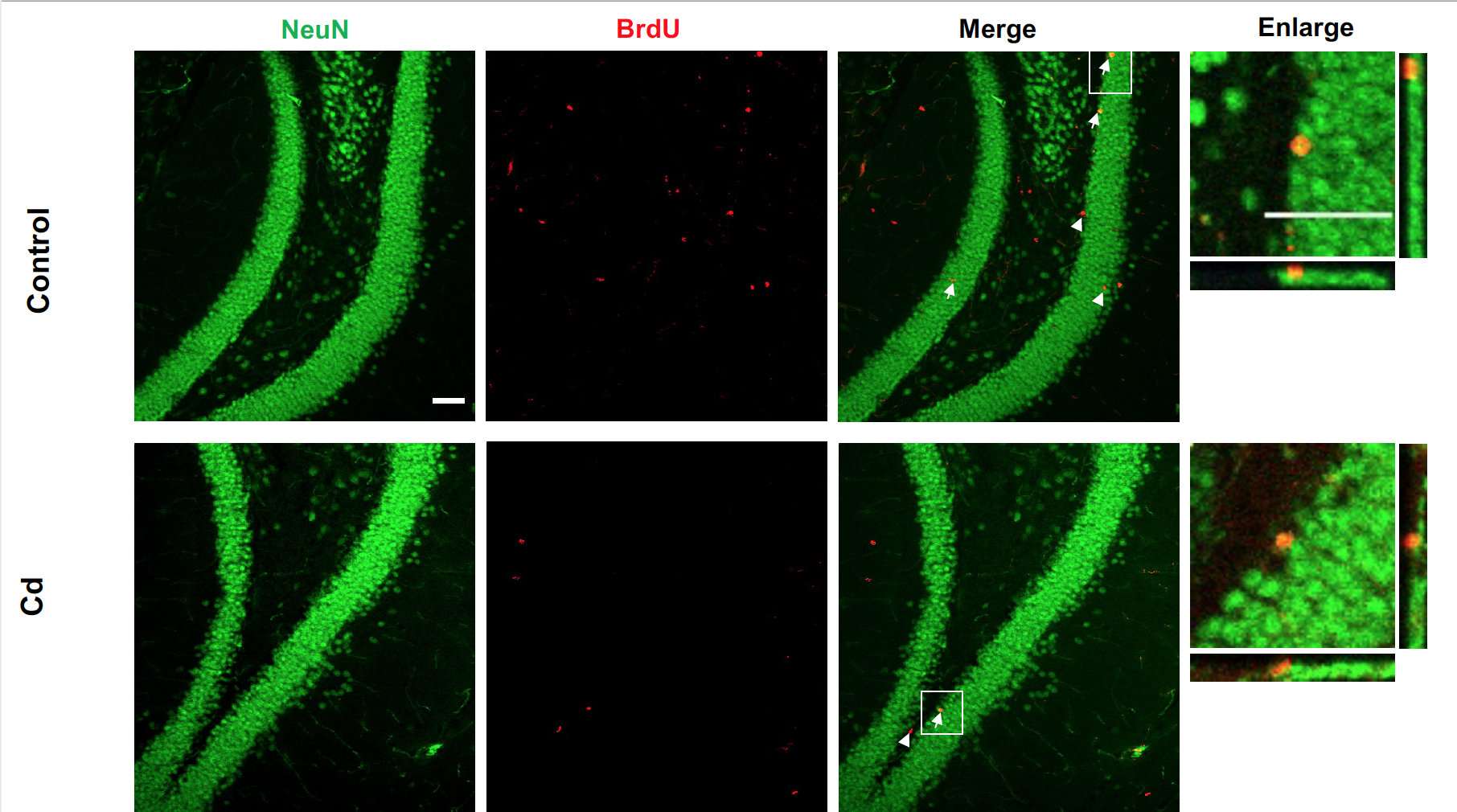
Together with his colleagues in Dr. Zhengui Xia's lab, Dr. Hao Wang (right) is helping build a compelling body of evidence that cadmium acts as a potent neurotoxicant.
Cadmium's adverse effects on the kidney, bones and respiratory system are well-documented, as is its status as a carcinogen. However, newer evidence is emerging that cadmium also has significant neurotoxicological effects at low doses.
Dr. Hao Wang, a post-doctoral researcher in the lab of Dr. Zhengui Xia, recently presented results virtually at the Alzheimer's Association International Conference (AAIC) demonstrating that cadmium exposure during adolescence in mice has significant toxic effects on the production and development of new neurons in the hippocampus (a part of the brain associated with memory and learning). Cadmium exposure was also found to affect performance in behavioral tests designed to evaluate spatial memory and contextual fear, even 28 weeks after cadmium exposure was stopped.
Adolescence is a critical developmental stage, characterized in part by the rapid development of the immature nervous system. The rates at which new neurons are generated and mature in adolescent rodents are significantly higher than in adult rodents. As a result, animals may be especially susceptible to the harmful effects of exposure to neurotoxicants during this period of their life. However, to date, very little work has been done to test this possibility.
Dr. Wang's work is important because it helps to fill in this research gap and to better document cadmium's effects as a neurotoxicant- an effect that is not accounted for in the current toxicological profile developed and maintained by the Agency for Toxic Substances Disease Registry, nor in the safety guidelines issued by the primary regulatory agencies in the U.S. and E.U.
The Xia lab has optimized techniques to administer cadmium to mice in their water to create a controlled exposure that results in blood levels in the rodents similar to those found in the average U.S. population. They then use a combination of behavioral tests and visualizations of cells in the brain to explore the effects of cadmium on learning and memory and on the formation of neurons in the brain. Together with his colleagues in the Xia lab, Dr. Hao is helping to build a compelling body of evidence that cadmium acts as a potent neurotoxicant, affecting brain development, learning and memory.
Each year the AAIC convenes experts from all over the world with the goal of advancing dementia science in order to better prevent and treat neurodegenerative disease. By presenting his results at the 2021 AAIC, Dr. Wang helped bring the attention of the international community of dementia experts to the potential role that cadmium exposure plays in impaired cognition.


